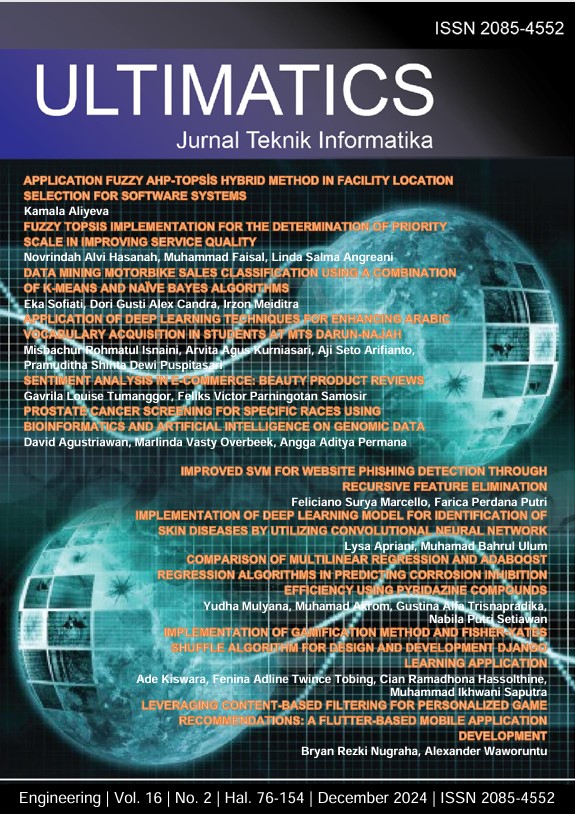Improved SVM for Website Phishing Detection Through Recursive Feature Elimination
DOI:
https://doi.org/10.31937/ti.v16i2.3744Abstract
Technology is developing faster every day, particularly in the information technology field. A website is one of the many information access points people use to do business activities, get information, and other purposes. Sophisticated websites are being developed and used, encouraging many naive individuals to commit crimes for financial gain. Phishing websites are a common method of using information technology to conduct fraud. One way to conduct phishing is by using the features on the website. One technique for identifying phishing websites is to use the Support Vector Machine (SVM) algorithm, which classifies websites based on features. However, the SVM algorithm is not able to detect many features so that the resulting accuracy and optimization level is also not good. Based on datasets, the SVM algorithm only gets around 60% to 70% accuracy. The use of Recursive Feature Elimination (RFE) feature selection is one way that can be done to cover the shortcomings of SVM. By eliminating features that irrelevant and redundance, RFE makes the SVM algorithm get a higher accuracy rate on the available dataset with an accuracy of 96.09%.
Downloads
Additional Files
Published
How to Cite
Issue
Section
License
Authors retain copyright and grant the journal right of first publication with the work simultaneously licensed under a Creative Commons Attribution-ShareAlike International License (CC-BY-SA 4.0) that allows others to share the work with an acknowledgement of the work's authorship and initial publication in this journal.
Authors are able to enter into separate, additional contractual arrangements for the non-exclusive distribution of the journal's published version of the work (e.g., post it to an institutional repository or publish it in a book), with an acknowledgement of its initial publication in this journal.
Copyright without Restrictions
The journal allows the author(s) to hold the copyright without restrictions and will retain publishing rights without restrictions.
The submitted papers are assumed to contain no proprietary material unprotected by patent or patent application; responsibility for technical content and for protection of proprietary material rests solely with the author(s) and their organizations and is not the responsibility of the ULTIMATICS or its Editorial Staff. The main (first/corresponding) author is responsible for ensuring that the article has been seen and approved by all the other authors. It is the responsibility of the author to obtain all necessary copyright release permissions for the use of any copyrighted materials in the manuscript prior to the submission.















